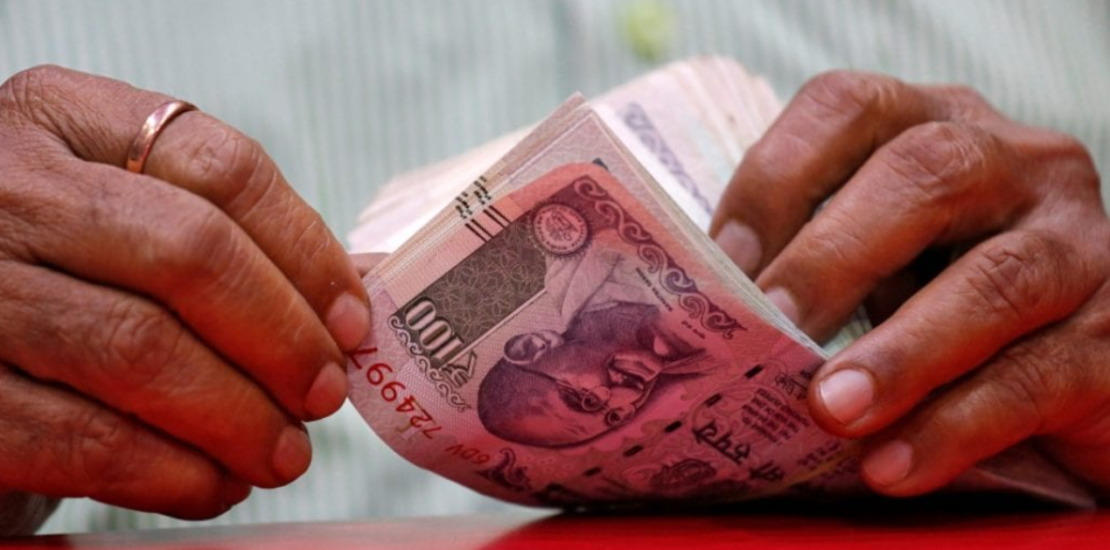- December 16, 2019
- Posted by: Amit Pabari
- Category: Market

After a cheerful weekend following the Asian peers, the Indian rupee retreated back in its comfort zone near 70.80 levels from the recent highs. As the markets are nearing much awaited Christmas holidays, volatility shall dry up as traders shall be closing their trading books and heading to party.
Domestically, India’s exports contracted marginally by 0.34 percent in November to $25.98 billion, while imports slowed to $38.11 billion, bringing down the trade deficit to $12.12 billion. However, seems like surprises are still around as the run for the rupee shall continue before taking a breather in its territory amid potential inflows lined up ahead.
The privatisation process of state-run BPCL will start this week with series of meetings for its strategic stake sale scheduled from Friday in London. In the disinvestment of BPCL programme, government intends to sell its entire 53.29 percent stake to a strategic investor. The officials will meet the prospective investors and will try to sell BPCL as an entity, which will give them an entry into the lucrative oil refinery as well as retail fuel market in India.
The Indian 10-year bond yield surged sharply after RBI kept its rate unchanged in its last policy meeting. This lead to rise in spread between the Indian 10-year treasury yield and US 10-year yield which is nearing about 4.94 percent. The hedging cost still remains relatively low near 4.15 percent which clearly allows earning an arbitrage of about 0.80 percent.
All of this makes India still a better amongst the bad investment option for foreign investors despite all the slowdown and grey clouds, hence opening up the scope for further inflows.
As witnessed by surge in reserves at all-time high of $453 billion, the inflows shall be absorbed with RBI’s intention and aggressive buying policy to protect rupee, thereby capping the gains in the home currency near 70.50-70.35 levels. Meanwhile, 70.50-60 strong support and buying zone whereas, 71.10-30 will remain selling zone for the next few sessions.
On the global front, last week, nothing mattered more to the direction of currencies than President Trump’s Chinese tariff decision. The Santa rally is coming early and the risk appetite is back as the sky high expectations for the phase-one trade deal were somewhat met before Christmas. Following the positive trade headlines, US stocks soared, the Chinese Yuan strengthened through the 7 handle and Treasury yields skyrocketed from 1.73 percent to 1.91 percent and now settled at 1.84 percent. However, neither side offered any detail on what the Chinese reforms might be, leading to fears that the deal will fail to resolve the key underlying conflict between the two superpowers.
In the UK, Boris Johnson’s Conservative party won a tremendous majority last week, paving the way for him to pass his Brexit deal. Now all eyes will be on the passage of the withdrawal bill in the UK Parliament. The UK may officially leave certain institutions, but it will practically enter a “grey area,” or post-Brexit implementation period. This is designed to ease the transition and give both the EU and the UK extra time to hash out a trade deal. UK intends to begin the process of exit from EU before January 31st and then ink a comprehensive deal with EU before December 31st 2020. Therefore, though GBP would remain on bid with limited upside but volatility may come-off. However, 1.3525 remains strong resistance for the pair and support will remain at 1.3280, if broken on either side shall bring in sharp moves.
Meanwhile, there were some important but subtle shifts in the ECB where Christine Lagarde presided over her first meeting and she kicked started her term with optimism. Instead of emphasizing the vulnerabilities in the economy and the need for ongoing stimulus, she said the risks were less pronounced and there are signs of a mild increase in core inflation. Adding to it, the ECB even upgraded its 2020 GDP and inflation forecasts.
President Lagarde’s conscious effort to buzz the bell of optimism at the start of her term suggests that she’s not as dovish as her predecessor. Whether she’ll get tough on inflation or let prices run higher before tightening, remains to be seen but her tone suggests that she is in no rush to ease again. As a result, in the near term we expect a further recovery stable EUR and mild recovery in the pair where 1.11950 remains a crucial resistance and support is at 1.1085 levels
Well, in today’s scenario instead of being a dove or a hawk, let’s strive to be an owl, the bird of wisdom.
Amit Pabari is managing director, CR Forex Advisors.
Leave a Reply
You must be logged in to post a comment.




